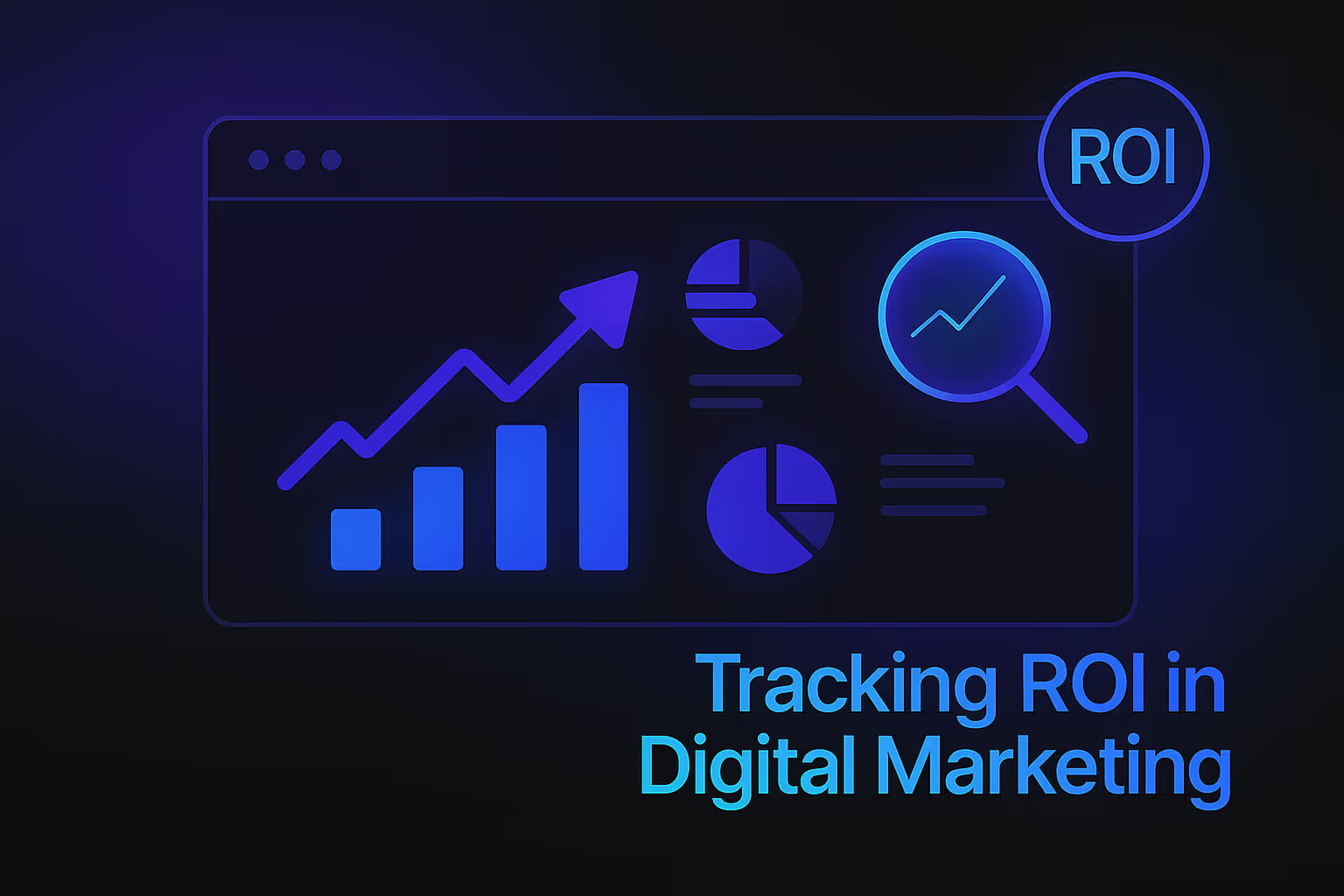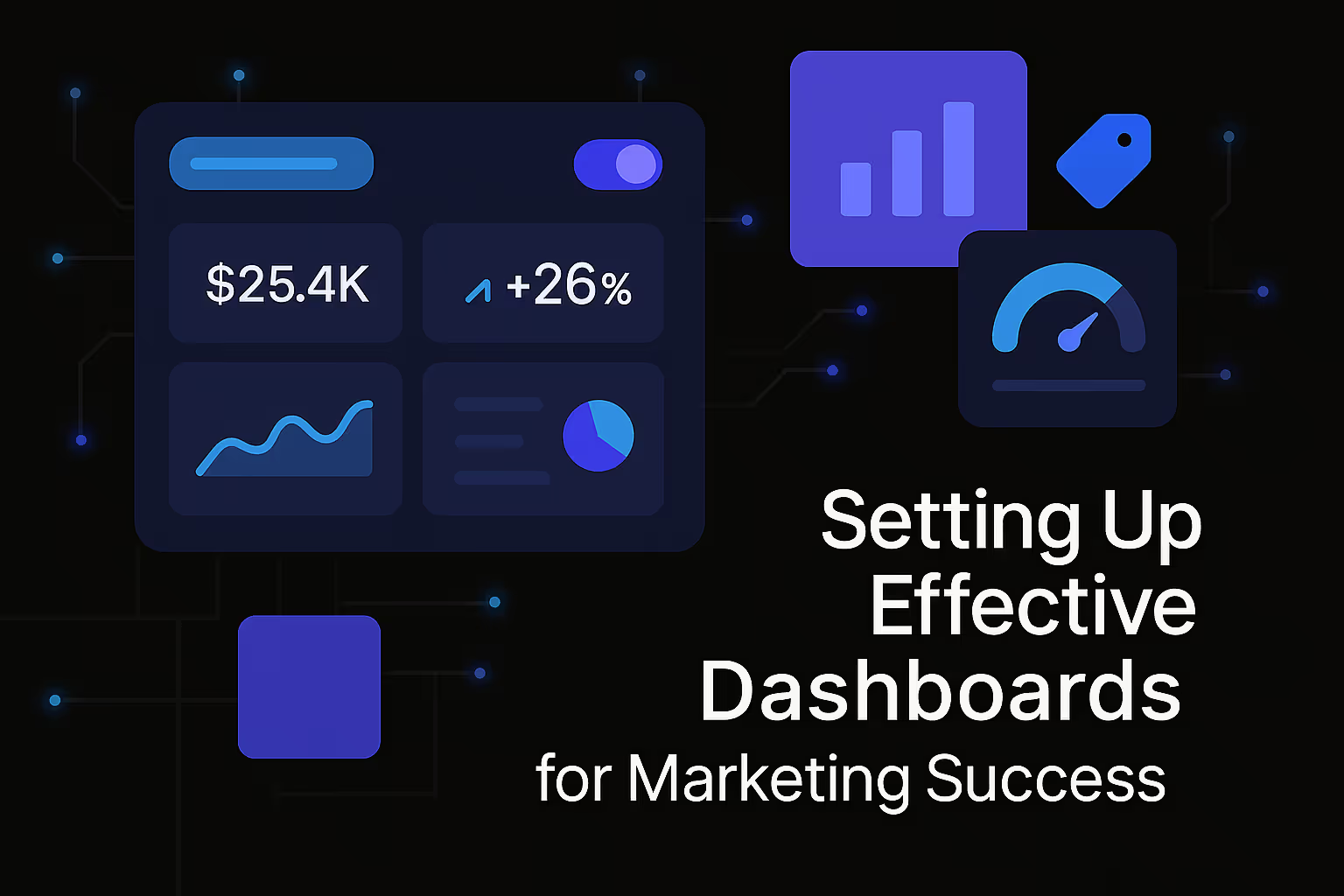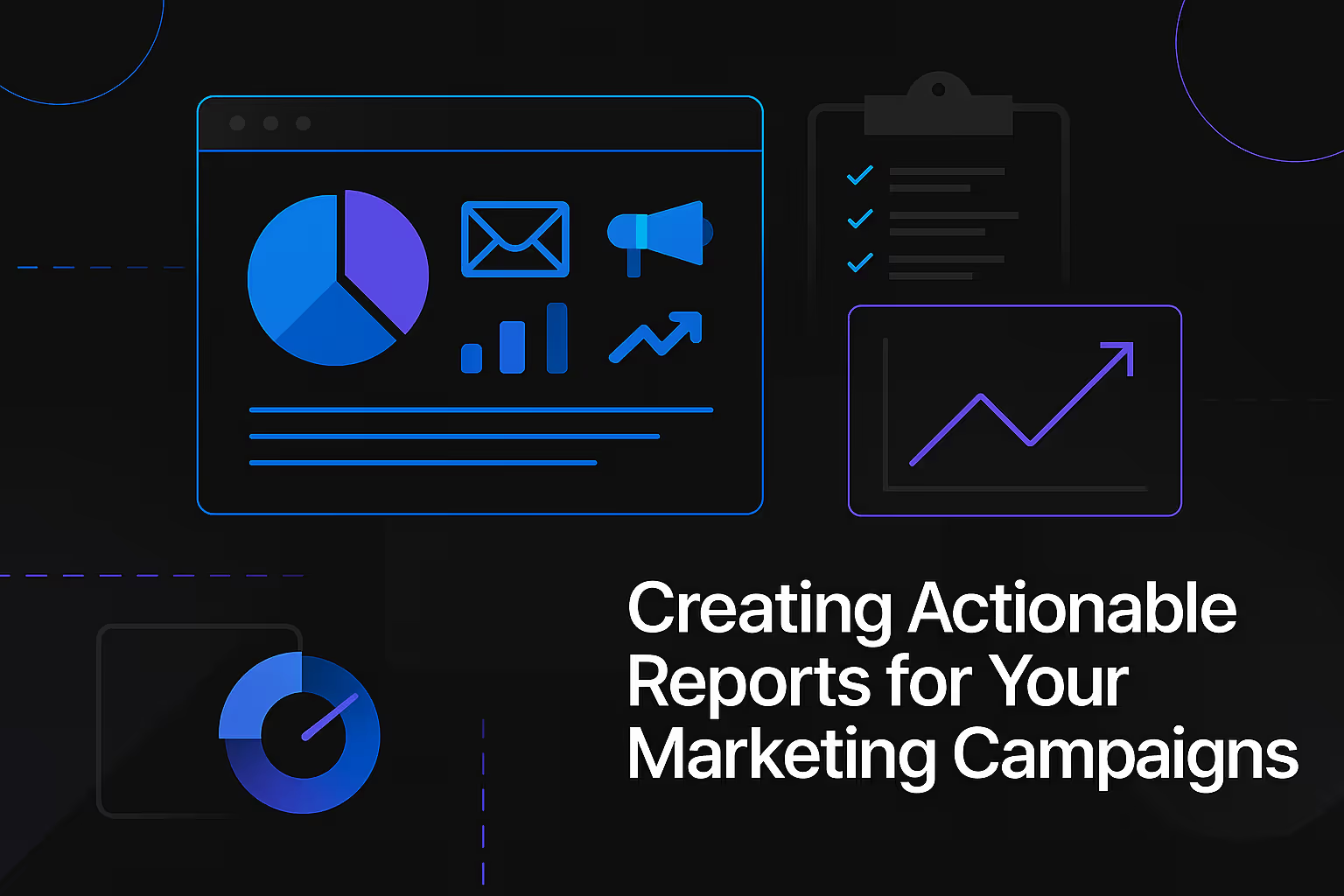The ROI of Analytics: Measuring What Matters

In today's data-driven world, the phrase "measuring what matters" has never been more pertinent. Businesses are awash in data, from website traffic to customer interactions, but the true challenge lies in transforming this raw information into actionable insights that drive tangible returns. This is where analytics steps in, not merely as a tool for observation, but as the engine for strategic growth and demonstrably higher return on investment (ROI). Understanding and effectively leveraging the ROI of analytics isn't just a best practice; it's a fundamental requirement for sustained competitive advantage.
For far too long, analytics has been perceived by some as a cost center, a necessary but unglamorous part of operations. This outdated perspective fundamentally misunderstands its power. When implemented strategically and measured effectively, analytics shifts from a cost to a profit driver, unlocking efficiencies, revealing opportunities, and ultimately delivering a significant return on the investment made in data infrastructure, tools, and expertise. The focus must move beyond simply collecting data to actively interpreting it to inform every critical business decision.
The journey to realizing this ROI begins with a clear understanding of what constitutes a valuable metric. It’s not about tracking everything, but about tracking the right things – those key performance indicators (KPIs) that directly correlate with business objectives. From optimizing marketing spend and personalizing customer experiences to streamlining operational workflows and fostering product innovation, analytics provides the evidence-based foundation for decisions that resonate throughout the entire organization, leading to measurable improvements and increased profitability.
Decoding the Value: How Analytics Drives Business Outcomes
The ROI of analytics isn't a singular, easily defined figure. Instead, it's a multifaceted return derived from various improvements across an organization. To truly appreciate its impact, we must dissect the different avenues through which analytics generates value and how these translate into tangible business outcomes.
Enhanced Decision-Making and Strategic Agility
At its core, analytics empowers better decision-making. In an era of rapid market shifts and evolving consumer behaviors, relying on gut feelings or anecdotal evidence is a recipe for stagnation. Data provides clarity, allowing businesses to make informed choices based on facts, not assumptions. This shift from reactive to proactive decision-making is a significant contributor to ROI. For instance, analyzing sales data can reveal geographical opportunities for expansion, while customer journey analytics can pinpoint friction points that, once addressed, lead to higher conversion rates.
Consider a marketing department. Without analytics, campaign effectiveness is largely a guessing game. With robust analytics in place, marketers can precisely identify which channels deliver the most qualified leads, which messaging resonates best with specific audience segments, and what the true cost-per-acquisition is for different strategies. This granular insight allows for the reallocation of budget to high-performing initiatives, drastically reducing wasted spend and maximizing the return on marketing investment. The ability to quickly pivot and adapt strategies based on real-time data is a direct outcome of strong analytical capabilities, contributing to improved agility and a quicker response to market changes.
Beyond marketing, operational efficiency sees immense benefits. Supply chain analytics can optimize inventory levels, reducing holding costs and minimizing stockouts. Predictive maintenance analytics can anticipate equipment failures, preventing costly downtime and extending asset lifespans. Each of these improvements, though seemingly small in isolation, cumulatively contribute to substantial cost savings and revenue generation, directly impacting the bottom line. The strategic agility gained from data-driven insights allows businesses to not only respond to current challenges but also to proactively identify and capitalize on future opportunities.
Optimizing Customer Experience and Retention
In today's competitive landscape, customer experience (CX) is a primary differentiator. Analytics plays a pivotal role in understanding, personalizing, and enhancing the customer journey, leading to increased satisfaction, loyalty, and ultimately, higher customer lifetime value (CLTV). By analyzing customer behavior data, businesses can gain deep insights into preferences, pain points, and engagement patterns.
For example, website analytics can reveal common navigation paths, drop-off points, and content consumption habits. This information can then be used to optimize website design, streamline user flows, and personalize content recommendations, making the online experience more intuitive and engaging. Similarly, analyzing customer service interactions can uncover recurring issues, allowing businesses to address systemic problems and improve service quality. The ability to segment customers based on their behavior and preferences enables personalized marketing campaigns, tailored product recommendations, and bespoke service offerings that resonate more deeply with individual needs, fostering stronger relationships.
The impact on customer retention is equally profound. By identifying customers at risk of churn through predictive analytics, businesses can intervene with targeted retention strategies, such as personalized offers or proactive support. A small improvement in retention rates can lead to a significant increase in profitability, as acquiring new customers is often far more expensive than retaining existing ones. The improved customer satisfaction fostered by data-driven personalization and proactive service directly translates into repeat business, positive word-of-mouth referrals, and a stronger brand reputation, all of which contribute significantly to the ROI.
Innovation and Product Development Led by Data
Analytics is not just about refining existing processes; it’s a powerful catalyst for innovation. By analyzing market trends, competitor activities, and most importantly, customer feedback and usage patterns, businesses can identify unmet needs and emerging opportunities for new products or services. This data-driven approach to innovation significantly de-risks product development and increases the likelihood of market success.
Consider a software company analyzing user engagement data. They might discover that a specific feature is rarely used, while another, perhaps unintended, use case is gaining traction. This insight can guide future development, leading to the deprecation of unloved features and the enhancement or complete reimagining of features that resonate with users. Similarly, sentiment analysis of social media conversations and customer reviews can highlight gaps in the market or common frustrations with existing solutions, providing fertile ground for truly innovative offerings.
Furthermore, analytics can inform pricing strategies, identify optimal product bundles, and predict demand for new offerings. This ensures that resources are allocated to developing products that genuinely address market needs and have a high probability of generating revenue. The ability to launch products that are truly desired by the target audience, rather than based on speculative assumptions, dramatically improves the ROI on research and development investments and accelerates time to market for successful innovations.
Measuring the Measurable: Quantifying the ROI of Analytics
While the qualitative benefits of analytics are clear, the true test lies in quantifying its ROI. This requires a systematic approach to identifying relevant metrics, establishing baselines, and meticulously tracking progress against strategic objectives. It's not about complex algorithms for their own sake, but about clear, understandable metrics that demonstrate value to stakeholders.
Defining Key Performance Indicators (KPIs) Tied to Business Goals
The first step in measuring the ROI of analytics is to define clear, measurable KPIs that are directly aligned with overarching business goals. Without this alignment, data becomes just numbers without context. For a marketing campaign, KPIs might include conversion rate, cost per lead, or customer acquisition cost (CAC). For operational efficiency, it could be inventory turnover rate, production downtime, or order fulfillment time. For customer experience, metrics like Net Promoter Score (NPS), customer satisfaction (CSAT), or churn rate are crucial.
It's imperative that these KPIs are specific, measurable, achievable, relevant, and time-bound (SMART). Vague goals like "improve customer satisfaction" are difficult to measure. Instead, "increase CSAT score by 10% within the next six months by personalizing customer support interactions" provides a clear target and a pathway to measurement. The process of defining these KPIs should involve cross-functional teams, ensuring that analytics efforts are integrated into the broader business strategy and that everyone understands how their work contributes to the defined objectives.
Regularly reviewing and refining these KPIs is also essential. As business priorities evolve or market conditions shift, the metrics that matter most may change. A flexible approach to KPI definition ensures that analytics remains relevant and continues to provide valuable insights that directly contribute to the organization's strategic goals.
Attributing Impact and Demonstrating Value
Attributing the impact of analytics initiatives can be challenging, particularly when multiple factors influence an outcome. However, by establishing baselines before implementing analytical strategies and then monitoring changes, businesses can demonstrate the value created. This often involves A/B testing, control groups, and statistical analysis to isolate the effect of analytics-driven interventions.
For example, if an analytics team identifies that a specific landing page has a high bounce rate, they can then use that insight to optimize the page. By A/B testing the new version against the old, and measuring the subsequent reduction in bounce rate and increase in conversion, they can directly attribute the improvement to the analytics-driven change. Similarly, if predictive analytics is used to reduce machine downtime, the ROI can be calculated by comparing the cost of previously unplanned outages to the savings achieved through proactive maintenance.
It’s also crucial to quantify the financial impact of these improvements. A reduction in CAC, for instance, directly translates to increased profitability. An improvement in customer retention can be tied to increased CLTV. These financial metrics resonate directly with executive leadership and make a compelling case for continued investment in analytics. Presenting data in a clear, concise manner, often through dashboards and reports that highlight key trends and financial implications, is paramount to demonstrating the ROI effectively.
Continuous Improvement and Iteration
The journey of realizing the ROI of analytics is not a one-time event but a continuous cycle of improvement. The insights gained from initial analytical efforts should inform subsequent strategies, leading to further optimization and new opportunities. This iterative approach ensures that analytics remains dynamic and responsive to evolving business needs.
This involves regularly reviewing the performance of analytics initiatives, identifying areas for further optimization, and exploring new data sources or analytical techniques. For example, if initial analysis reveals a strong correlation between social media engagement and sales, further investment in social listening tools and social media marketing might be warranted. Similarly, if customer churn remains a persistent issue, deeper dive analytics into customer feedback and service interactions could uncover underlying causes.
Fostering a data-driven culture within the organization is also critical for sustained ROI. When employees at all levels are empowered to use data in their daily decision-making, the impact of analytics becomes pervasive. This requires providing accessible tools, training, and a leadership commitment to valuing and acting upon data-driven insights. Ultimately, the maximum ROI from analytics is achieved when it becomes an integral part of the organizational DNA, guiding every strategic decision and operational improvement.
The Future of Measurement: AI, Machine Learning, and Predictive Analytics
As businesses mature in their analytical capabilities, the focus shifts beyond descriptive and diagnostic analytics to embrace predictive and prescriptive approaches. The integration of artificial intelligence (AI) and machine learning (ML) is rapidly transforming the landscape of analytics, unlocking new levels of insight and significantly amplifying its ROI.
Moving Beyond Historical Data to Future Foresight
Traditional analytics often focuses on understanding what has already happened. While valuable, the true power of advanced analytics lies in its ability to forecast future trends and behaviors. Predictive analytics, powered by AI and ML algorithms, can analyze vast datasets to identify patterns and probabilities, enabling businesses to anticipate future outcomes with remarkable accuracy.
This foresight has profound implications for ROI. Imagine being able to accurately predict customer churn before it happens, allowing for proactive retention efforts. Or predicting demand fluctuations for products, optimizing inventory and production schedules to minimize waste and maximize sales. These capabilities move businesses from a reactive stance to a truly proactive one, minimizing risks and maximizing opportunities. The ability to foresee potential problems and address them before they escalate translates directly into cost savings and revenue protection, significantly enhancing the ROI of the entire analytics ecosystem.
Furthermore, predictive analytics can identify emerging market trends and consumer preferences, giving businesses a crucial first-mover advantage. This allows for the development of new products and services that truly resonate with future demand, leading to greater market share and increased profitability.
Prescriptive Analytics: The Next Frontier of Actionable Insights
Building upon predictive capabilities, prescriptive analytics takes it a step further by not only forecasting what will happen but also recommending the best course of action. These systems leverage AI and ML to analyze potential outcomes of different decisions and suggest the optimal strategy to achieve a desired business objective.
For example, a prescriptive analytics system might recommend the ideal pricing strategy for a new product launch based on predicted market demand, competitor pricing, and historical sales data. In a supply chain context, it could suggest optimal routes for deliveries, considering traffic, weather, and fuel costs to minimize expenses and delivery times. These recommendations are not just insights; they are actionable instructions designed to optimize outcomes.
The ROI of prescriptive analytics is exceptionally high because it automates and optimizes complex decision-making processes that would otherwise require significant human effort and expertise. It reduces errors, improves efficiency, and ensures that the best possible decision is made consistently, leading to maximum financial returns and operational excellence. The ability to not just understand but act with data-driven certainty is the ultimate realization of analytics' potential.
Ethical Considerations and Data Governance
As the reliance on advanced analytics grows, so too does the importance of ethical considerations and robust data governance. Ensuring data privacy, security, and responsible use is paramount, not only for regulatory compliance but also for maintaining customer trust. Without trust, even the most sophisticated analytics will fail to deliver sustained ROI.
This involves establishing clear data collection policies, ensuring transparency with customers about how their data is used, and implementing strong cybersecurity measures to protect sensitive information. Furthermore, addressing potential biases in algorithms and ensuring fairness in automated decision-making is crucial. A commitment to ethical AI and data governance strengthens a company's reputation, mitigates risks, and ultimately contributes to long-term sustainable growth and a positive ROI. Investing in sound data governance practices is not a cost, but a necessary investment in the longevity and trustworthiness of the entire analytics endeavor.
The Enduring Imperative: Analytics as a Strategic Asset
The ROI of analytics is no longer a question of "if," but "how much." In an increasingly competitive global economy, businesses that fail to harness the power of data will inevitably fall behind. Analytics is not a luxury; it is a strategic imperative, a fundamental asset that drives informed decision-making, fosters innovation, enhances customer experiences, and ultimately, delivers significant and demonstrable returns on investment.
From optimizing marketing spend to personalizing customer journeys and predicting future trends, the impact of analytics permeates every facet of a successful enterprise. By focusing on measurable KPIs, attributing impact effectively, and embracing continuous improvement, businesses can unlock the full potential of their data. As AI and machine learning continue to evolve, the capabilities of analytics will only expand, offering even greater opportunities for strategic foresight and optimized performance. The businesses that truly measure what matters, and act upon those measurements, are the ones poised for enduring success in the modern age.
Similar Insights
Stay Updated with Our Insights
Join our newsletter for the latest trends and tips in web development and digital marketing.




